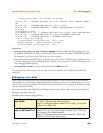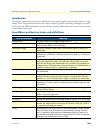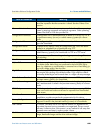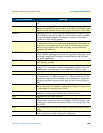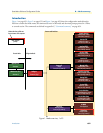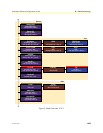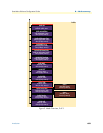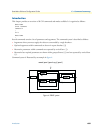
SmartWare architecture terms and definitions 648
SmartWare Software Configuration Guide A • Terms and definitions
Network Management System System responsible for managing at least part of a network. An NMS is
generally a reasonably powerful and well-equipped computer, such as an
engineering workstation. NMSs communicate with agents to help keep
track of network statistics and resources.
Node Endpoint of a network connection or a junction common to two or more
lines in a network. A Node can be a router, e.g. a SmartNode. Nodes,
which vary in routing and other functional capabilities, can be intercon-
nected. Node sometimes is used generically to refer to any entity that can
access a network, and frequently is used interchangeably with device.
Nodename Name given to a SmartNode or network element.
nvram: Persistent memory section of a SmartNode containing the startup configu-
ration, the factory configuration and used defined configurations.
Operator The person who has limited access to the CLI.
PCI Local Bus The PCI Local Bus is a high performance, 32-bit or 64-bit bus with multi-
plexed address and data lines. The bus is intended for use as an intercon-
nect mechanism between highly integrated peripheral controller
components, peripheral add-in boards, and processor/memory systems.
PCM Highway A 30 channel interface connecting the switching engine with optional
interface cards containing circuit ports.
Port A port represents a physical connector on the SmartNode.
Port Address A port address can be assigned to a CS interface to realize a virtual voice
tunnel between two nodes.
Post Filter The voice decoder output is normally filtered using a perceptual post-filter
to improve voice quality. See also High-Pass Filter.
POTS Plain Old Telephone Service
Profile A profile provides configuration shortcutting. A profile contains specific
settings that can be used on multiple contexts, interfaces or gateways.
PSTN Public Switched Telephone Network. Contains ISDN and POTS
Q.931 Tunneling Q.931 tunneling is able to support ISDN services and Q.SIG over an IP
network.
Q.SIG ISDN Services comprise additional services for the Private ISDN network
such as CNIP (Calling Name Identification Presentation), CNIR (Calling
Name Identification Restriction) etc. See also ISDN Services.
Release A software release describes the main voice and data feature set. It con-
sists of a series of builds.
Routing Engine The routing engine handles the basic IP routing.
Running Configuration The currently running configuration (running-config), which is executed
from the volatile memory (system:).
Session Router Calls through SmartNode can be routed based on a set of routing criteria.
The entity that manages call routing is called Session Router.
Session Initiation Protocol (SIP) Used for setting up communications sessions (such as conferencing, instant
messaging, and telephony) on the Internet
Silence Compression Silence suppression (or compression) detects the silent periods in a phone
conversation and stops the sending of media packets during this periods.
Term or Definition Meaning



